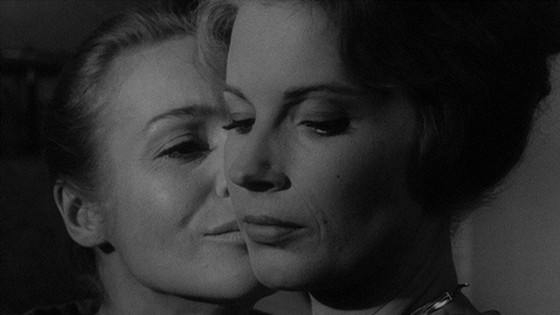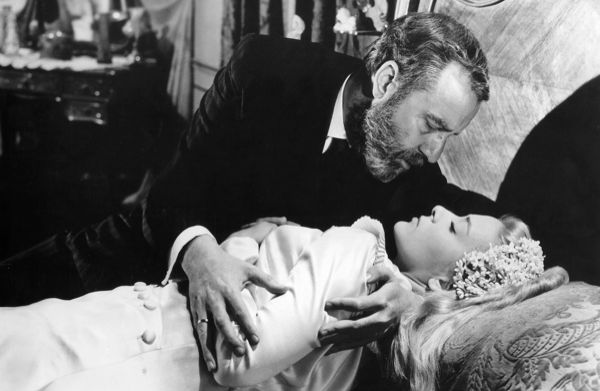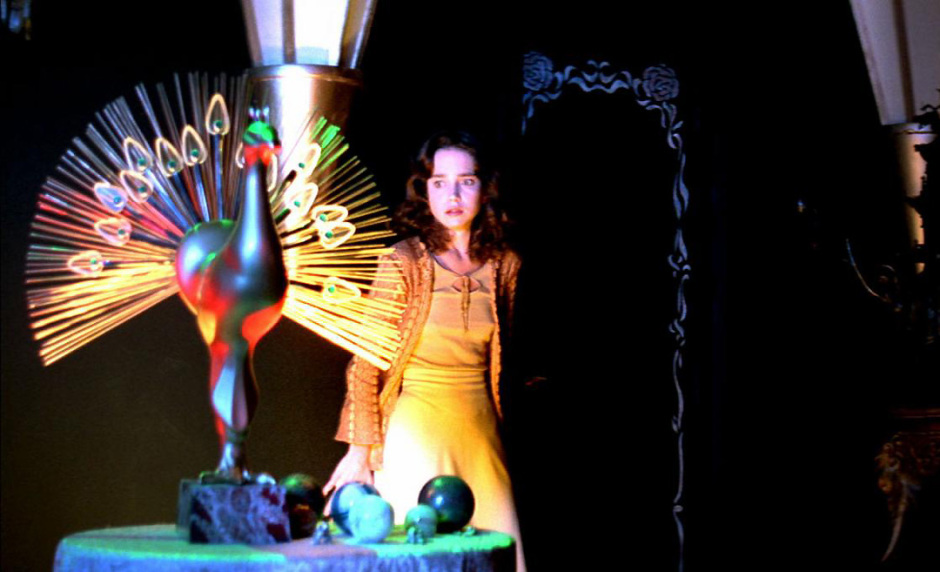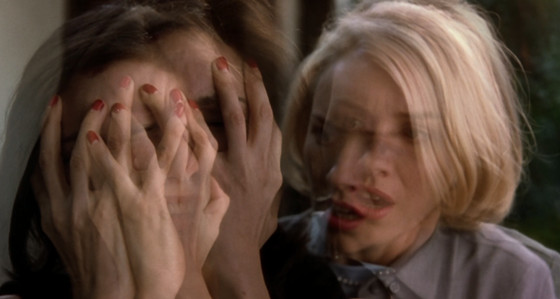5. The Silence

Ingmar Bergman loved featuring dreams and clouded memories into his works. He would strip the sounds of the environment, place relevant (or irrelevant) sounds on top to heighten a scenario (or to distance you from its familiarity). Many of his works were outright works of modernism (Persona, Cries and Whispers), or were real tales that dabbled in one’s subconscious (Wild Strawberries, Through a Glass Darkly).
The Silence was one of Bergman’s greatest blends between reality and the imaginary. Two distant sisters are cooped up in one building (and the general vicinity around it) for a set period of time. Now, they don’t explicitly get cabin fever, but they both begin to lose their control of the situation.
Many sudden vignettes occur: a sister’s surprise sexual explorations that damn the other, the circumstances in a vacant theatre, and the unexpected visiting of a traveling troupe. Everything can be explained, but the way these scenes are played out make them just a little too alien to be a part of our reality.
4. Viridiana

Luis Buñuel was fascinated with dreams his entire career. He started with the avant-garde short Un Chien Andalou, and ended with That Obscure Object of Desire; of course, many dream-based films are found in his filmography.
Viridiana, like The Silence for Ingmar Bergman, is one of Buñuel’s finest examples of how reality can be blurred with our subconscious. Instead of working with dread here, Buñuel channels trauma. A novice resembles her uncle’s departed wife in a ghostly way, and his fixation drives him into a downward spiral. Selfish desire becomes regret, and a chasing of life turns to death.
As the world in Viridiana begins to slip, so does reality. We suddenly lose the concept of time, spatial awareness, and even story semblance. Viridiana begins to break the fourth wall, and even becomes a near-satire of, well, films period. It goes against the grain despite having been so committed initially. The dust finally settles, but you can’t shake off everything you’ve just witnessed (the real and serious, or the imaginary and experimental).
3. Vertigo

It’s highly debatable what Alfred Hitchcock’s number one masterpiece is, but Vertigo has certainly gained some steam within the last decade or so. Many of his works tried to be the subject of your nightmares, but not many actually tried to be nightmares themselves.
Outside of the odd work like Spellbound (with a dream sequence designed by Salvador Dali), Vertigo is the strongest case of Hitchcock giving in and actually providing a surreal horror to us. The suffering John Ferguson has such a fear of heights after a brush with death (and the witnessing of his partner dying), it lingers into many of his daily activities.
With slow, stoic shots of Ferguson trying to solve a personal case, and actual dream sequences of his own (animated and rear projected to boot), you always knew that John had one foot in the pool of his own personal hell.
By the end, when you believe John is crazy but are then proven wrong, you are ready to cheer and applaud. That’s when you, like John, are caught off guard. Sometimes, our worst fears and nightmares become real, and Vertigo might be the greatest depiction of this in a single instance ever put to film.
2. Suspiria (original)

Sure, the 2018 remake is also a living nightmare in its own slow, brooding way. However, the Dario Argento original is a technicolour descent into hell. The fact that the main villain doesn’t really even take on one form is one thing; that we don’t even really see most of these forms is another. We are splattered by bright orange blood and surrounded by the brightest of gel light colours, yet our mind still has to put some of the pieces together.
The first entity is just an arm brandishing a knife (apparently with cat-like eyes). We never see this again. We do see a house tearing itself apart, and a savage plastic bat going ballistic. Yes, I get that all of these instances are supernatural, and they do indeed stem from one root.
Yet, that’s how dreams work in a way. We create so many indescribable images, and they all come literally from the root of our brains. Much of Suspiria is a daze, but we still can grasp onto it (at least for the aesthetics alone).
1. Mulholland Drive

Yep. David Lynch’s opus is getting featured more and more, but it’s just so damn good at doing many things. Naturally, on a list that features the best cinematic nightmares, of course Mulholland Drive will be here. To use Nolan’s Inception as a weird frame of reference, you enter Mulholland Drive not knowing where you are or how you got there.
You know that everything seems a bit off: the characters seem a bit stiff, and the music and sound editing seeps into one another like a hallucinatory trip. You begin to get familiar with the story: an aspiring actress has the gig of a lifetime, a director is having the worst day ever, and a mysterious woman has no recollection of who she is.
Suddenly, we get slapped with a whole series of oddities, and we realize that even this is not real. We enter the real world (or a perception of one, anyways), and start to decipher what everything previously was. A big faux pas in writing is to make an entire story a dream or an illusion: Mulholland Drive is an exception to that rule.